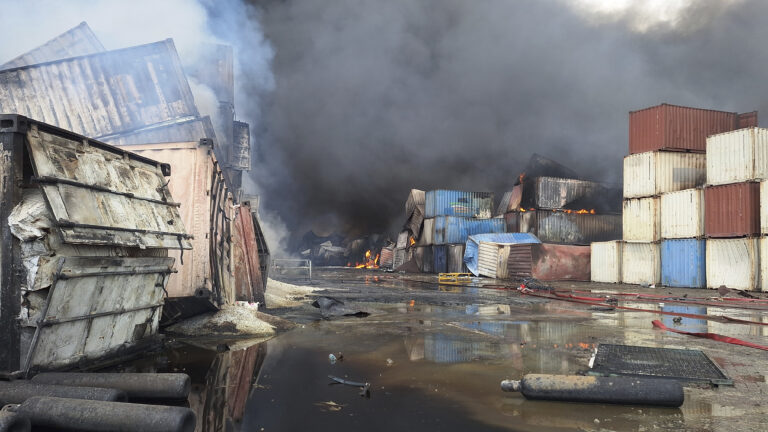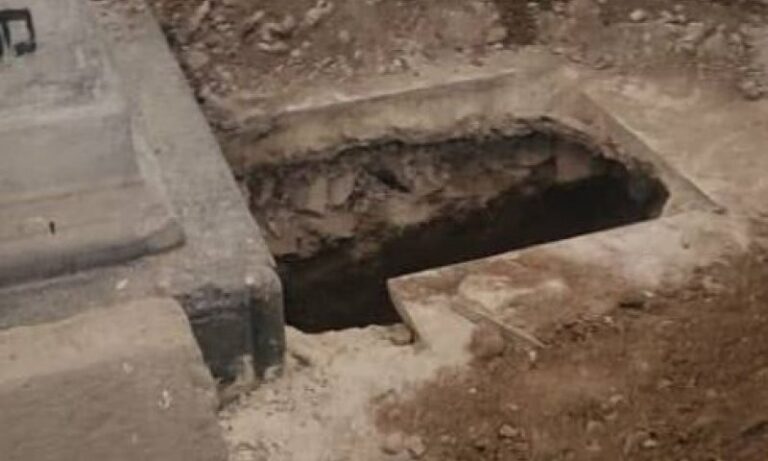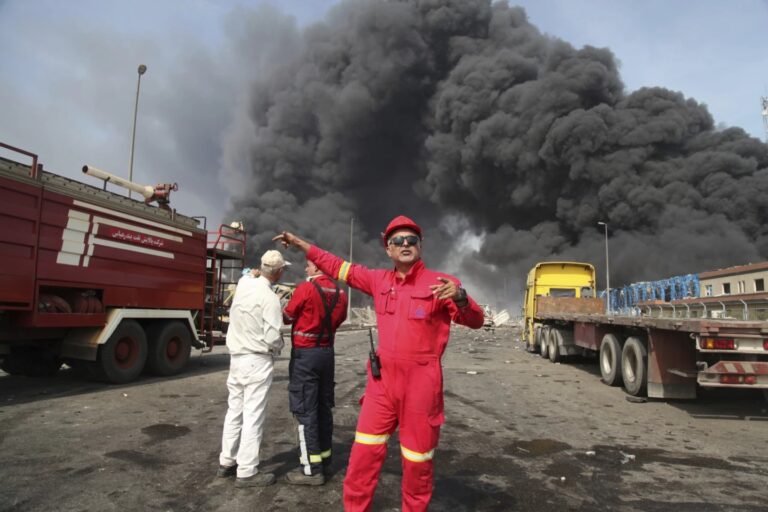 Terrorists, speed demons, rowdy concert-goers and other ruffians may want to think twice about breaking the law in Lakewood, NJ. Last fall, the Lakewood Police Department purchased a PacketHop Communication System, a mobile-mesh broadband network, which enables them to communicate more rapidly and more extensively during everything from routine patrols to tactical operations and disasters.The deployment of the PacketHop system in September at a musical event called Wingstock was the first roll-out of a 4.9GHz broadband mobile-mesh network in the state. While a wing-themed rock concert may not seem like the sort of place first-responders would want to test the frequency the FCC has set aside for them in anticipation of another cataclysmic event like September 11th, 2001, it proved to be a valuable exercise.
Terrorists, speed demons, rowdy concert-goers and other ruffians may want to think twice about breaking the law in Lakewood, NJ. Last fall, the Lakewood Police Department purchased a PacketHop Communication System, a mobile-mesh broadband network, which enables them to communicate more rapidly and more extensively during everything from routine patrols to tactical operations and disasters.The deployment of the PacketHop system in September at a musical event called Wingstock was the first roll-out of a 4.9GHz broadband mobile-mesh network in the state. While a wing-themed rock concert may not seem like the sort of place first-responders would want to test the frequency the FCC has set aside for them in anticipation of another cataclysmic event like September 11th, 2001, it proved to be a valuable exercise.
“We installed roughly 12 nodes around the venue so that they could do crowd and traffic control and manage resources around the event,” says Kevin Payne, PacketHop’s director of corporate communications.
Having access to streaming video inside squad cars enabled officers to cover more ground more quickly, to be managed from the single command center a significant distance away from the farthest node, and to respond more effectively to incidents. The access to video also cut down on the need for additional security personnel to staff the event, which significantly reduced costs to the department.
“They parked a squad car at a key intersection, turned on the camera, locked the car, and walked away,” says Payne. “They could monitor the intersection from elsewhere, so they didn’t need an officer there. It saves time and resources.”
One of the advantages of the PacketHop system is that it’s easy to learn. In Lakewood, for instance, officers wound up using the equipment before they had formally been through any training.
“The concert was on a Saturday in September,” says Payne. “We installed [our system] in [the squad] cars midweek. It was operational the day before the event, but the officers had not yet had their training. There was a gang shooting that Friday night. Officers responded. When they climbed in their cars, they saw the video feed. They didn’t know what it was — they hadn’t been trained — but they were able to use it because it is just a point-and-click interface.”
You may never have heard of Lakewood, but the town was a natural choice for the 4.9GHz mobile-mesh deployment, due to its status as a high-risk terrorist target. It is home to several energy and chemical plants, as well as one of the largest orthodox Jewish communities — and the largest orthodox Jewish university — in the world. It also has a police department with a reputation for embracing technology.
“There are unique security challenges for this police department,” says Payne. “A very famous rabbi visited in November 2006. Police were deployed around campus and the traffic route to do crowd control. He was so high-ranking that he had to be protected from the population, who just wanted to touch him, as well as from terrorists.”
By using the PacketHop system, Payne says the LPD saved $3,000 in one night.
In addition to special events and disaster response, the PacketHop system can be leveraged on a routine basis to increase the daily efficiency of police departments.
“Lakewood has come up with some clever day-to-day uses,” says Payne. “For example, virtual field lineups. If someone is mugged and then someone is apprehended nearby, you typically have to drive the victim to the scene to make an ID. With this, you can take a photo of the suspect and IM it to another node, and show it to the victim so that he can make the ID without having to face them.”
Other routine uses include GPS mapping and tracking, which, combined with streaming 30 frame-per-second (fps) video in the cars, can assist in traffic pursuits.
“The system provides officers with mapping, so that they can see where streets are and get real-time locations of the other nodes in the chase, so the watch commander can tell one car to break off pursuit, etc.,” says Payne.
Surveillance is another area where the broadband mesh network’s ability to stream video is useful. Before raiding a drug house, for instance, officers can set up video feeds around the perimeter of the house. The LPD has also established agreements with local schools and businesses, such as banks, to tie into their existing video systems.
“This way, they can access the video systems and stream into patrol cars and back to watch command,” Payne says. “If there’s an incident, the PD can respond better. They can ascertain if it’s real or a false alarm.”
PacketHop also emphasizes the importance of increasing officer safety. By allowing for live streaming video feeds from patrol cars, watch commanders can see everything that’s going on with responding officers. If a routine traffic stop goes bad, officers and emergency vehicles can immediately be dispatched to the location.
“We’re utilizing the video to create a kind of virtual intelligence network,” says Payne. “They can capture a picture of someone or a vehicle, and send it across the network. They can get answers, share visual information, and tap into other people’s brains on the fly.”
The full list price for one node is $5,000, with discounts for volume purchases.
“Because the solution is software-based, we could install it in the cars with the existing equipment that they already had,” Payne says. “We just put an antenna on the roof, plug the 4.9GHz cards into the laptops — they already had video cameras. So, basically, the Lakewood PD paid about $40 per car to install it. They just had to buy a little cable.”
The Wingstock deployment caught the interest of homeland security experts, including the deputy director of the New Jersey Homeland Security Technology Systems Center at the New Jersey Institute of Technology, who came out to observe the system in action. But Payne says to focus on disaster response is to miss the big picture.
“The system’s always been viewed as really good for disaster response, like Katrina or the bombings in London,” says Payne. “But what’s more challenging is the daily-use cases. In Lakewood, it enhances their safety and improves communication between officers and the watch commander.”
As for the future of mobile-mesh broadband in this spectrum, Payne says he envisions more municipal applications.
“I think there are some other areas we’re looking to grow into, such as metro Wi-Fi, where we can enhance delivery of services to the public,” he says. “Like with code enforcement, we can send out an inspector who can access plans in the field. We’re also seeing an interest in getting security access into schools or onto school buses and public transit. The last area is with telemedicine — the ability to stream broadband info from a patient’s home through an EMT, in an ambulance that’s sent out, and back to a hospital. That’s an area that’s just starting to take off, but there’s a lot of interest in it. It saves a lot of money to everyone and provides better medical service, especially for shut-ins or those in remote areas.”
(Source: WF)











4 Responses
wait a second …lakewood has diasasters ??? when was the last flood,hurricane,tornato ?? and they need this
You would think that a force of 150+ officers was enough for a relatively small town like lakewood, where 99.5% of the population dont know how to commit a crime on a level for the use of this technology. But let them enjoy their new toy maybe they will be to busy playing with their new toys to continue giving out petty traffic tickets and other nonsense
let us hope that they should be the shleac from hashem 2 protect the biggest yeshiva in the world & all jews liveing in lakewood….they r doing it 4 us not 4 them self 2 have fun!!!! what do u think they r playing police …. have some hakores hatov 2 them they desarve it…..
It’s obviously for terrorism. As the article points out, Lakewood is unfortunatly a huge terrorist target. We should never know from terrorism here but better to have and not need than to need and not have.